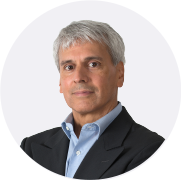Published:
How can neck pain be a protector for migraine attacks?
By Alec Mian, PhD, CEO Curelator on January 18, 2016
Q&A with Alec Mian, PhD, CEO and Founder of Curelator Inc. and user Helen Power.
Alec: Helen Power is one of the initial users of N1‑Headache™ and has the distinction of being the first in a group of users where neck pain surprisingly turned up as a protector.
Helen: When you first interviewed me months ago, I was definitely puzzled to see neck pain on my Protector Map®! Did anyone else have neck pain as a protector on their maps?
The Individual Protector Map® for Helen Power has two surprising aspects:
Both “Neck Pain” and “Sadness” are associated with lowering her risk of migraine attacks. Why? Consider Helen’s corresponding actions associated with these factors:
Individual Protector Map® for Helen Power
Protectors are associated with decreased risk of an attack.
Results of a 90 days analysis by N1‑Headache™.

 Neck Pain
Neck Pain
 Sadness
Sadness
 Time Outside
Time Outside
 Activity
Activity
 Neck Pain
Neck Pain  Sadness
Sadness
Alec: Neck pain is commonly thought to be a warning sign or a symptom of a migraine attack. So far, and it is early days, we have found seven other users who have neck pain as a protector on their maps. I’ve interviewed a couple of them and their responses were similar to yours Helen.
When people get neck pain, they may do a variety of things – apply a heat pad, lie down, stretch. Therefore, all of these things become associated with that person’s neck pain. So my first question to anyone with an unexpected protector or trigger is, “What things were you doing when you recorded that factor?” That’s why, in our initial interview I asked, “What do you do when you get neck pain?”
Helen: At that time I was doing a series of physiotherapy routines. They definitely helped the neck pain but it never occurred to me that the exercises might also have a protective effect on the attacks.
My doctor sent me to physiotherapy for neck and shoulder pain. The exercise that I think is impacting on my migraines is the one my physiotherapist called, “C retraction” (Cervical neck retraction).

trapezius massage”

shoulder, neck.
Instruction for cervical neck retraction:
1- Lean against a wall, shoulders and bottom touching, knees slightly bent, feet 6 inches from wall, hip width apart.
2- Lean back of head against wall. Slide head up the wall, bringing chin down, but not looking down, giving yourself a double chin. Hold this position. Build up to 5 mins.
Helen: Another helpful thing was massaging the trapezius muscle trigger points, either by a physio, partner or myself.
Alec: I spoke with another N1‑Headache™ user, who was a doctor and who also had neck pain as a protector. He does daily massage of his shoulder muscles; 5-10 minutes, lying – back down with a MA Roller

He lies down on the roller and believes it lessens neck tension from sitting at a desk and also that it relieves his migraines. He added that he tries to be really conscious of when he is ‘scrunched up’ while sitting.


Helen: I am also much more aware of my posture now than before I started physiotherapy… when my physiotherapist taped my trapezius muscle, the relief was immediate. I left it on for 10 days and the goal was to retrain my muscles. I think the tension there starts off my neck pain.
Alec: Helen have you noticed a relationship between your neck pain exercises and your attacks?
Helen: Yes, one point of interest is that due to an injury, I have had to stop all lower back exercises, and since then I’ve noticed a significant increase in headache intensity and duration, neck and shoulder pain. I also noticed a few days ago that the neck pain as a protector has suddenly disappeared. So, perhaps cutting back on my exercises is what caused neck pain to disappear as a protector and that may help explain my increase in headaches.
Alec: That is very interesting – you were actually doing a natural experiment! The other unusual protector that appeared on your maps is sadness.
Helen: Yes, I was surprised to see that too. It was associated with a bereavement. There was no time for sitting down and moping around. So I felt incredibly sad but I was with people. There have been other times when I was really sad and didn’t have a headache, probably because we were remembering the fun times or the good times. They both had to do with bereavements.
Alec: Thanks Helen. Let’s follow up in a few months and find out how you are feeling. I think that sharing insights about protectors can be very helpful to the n1-Headache community. In fact, there is substantial evidence in clinical literature and among physiotherapists to support the use of Cervical Neck Retraction to alleviate headaches associated with neck pain. However, it is advisable for patients to consult their personal physicians before trying the exercises described in this column.
Go back to articlesReferences:
-
Aokhealth, NeckTek,
Cervical Pain and the Deep Neck Flexors
Available at:
https://aokhealth.securestand.com/xq/ASP/SellerID.4750/ProductID.2626/qx/pdf/Cervical_Pain_and_the_Deep_Neck_Flexors.pdf -
van Ettekoven, Lucas C.
Efficacy of physiotherapy including a craniocervical training programme for tension-type headache; a randomized clinical trial.
Cephalalgia 2006; 26:983–991. London. ISSN 0333-1024
Available at:
http://www.thera-bandacademy.com/elements/clients/docs/vanettekoven2006__201110DD_121646.pdf -
Page P.
Cervicogenic Headaches: An Evidence-Led Approach to Clinical Management.
Int J Sports Phys Ther. 2011 Sep; 6(3): 254–266.
Available at:
http://www.ncbi.nlm.nih.gov/pmc/articles/PMC3201065/




